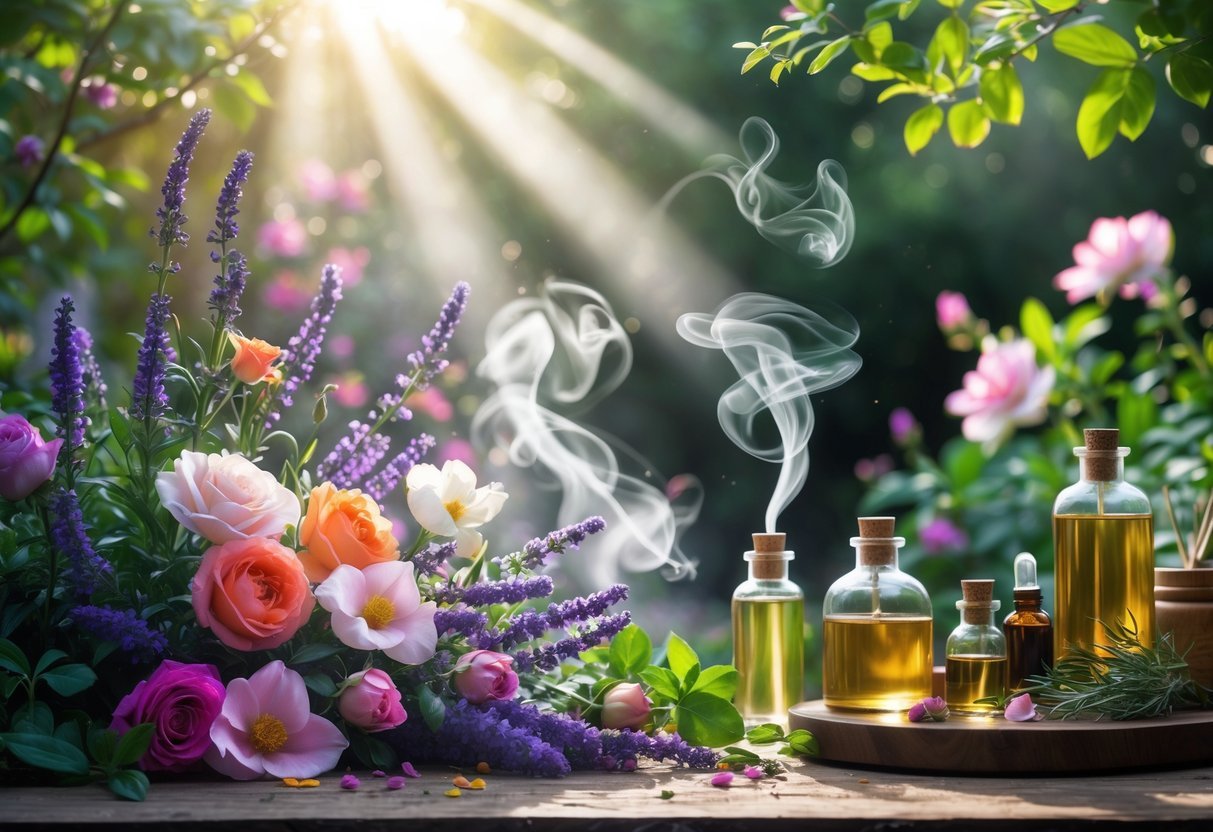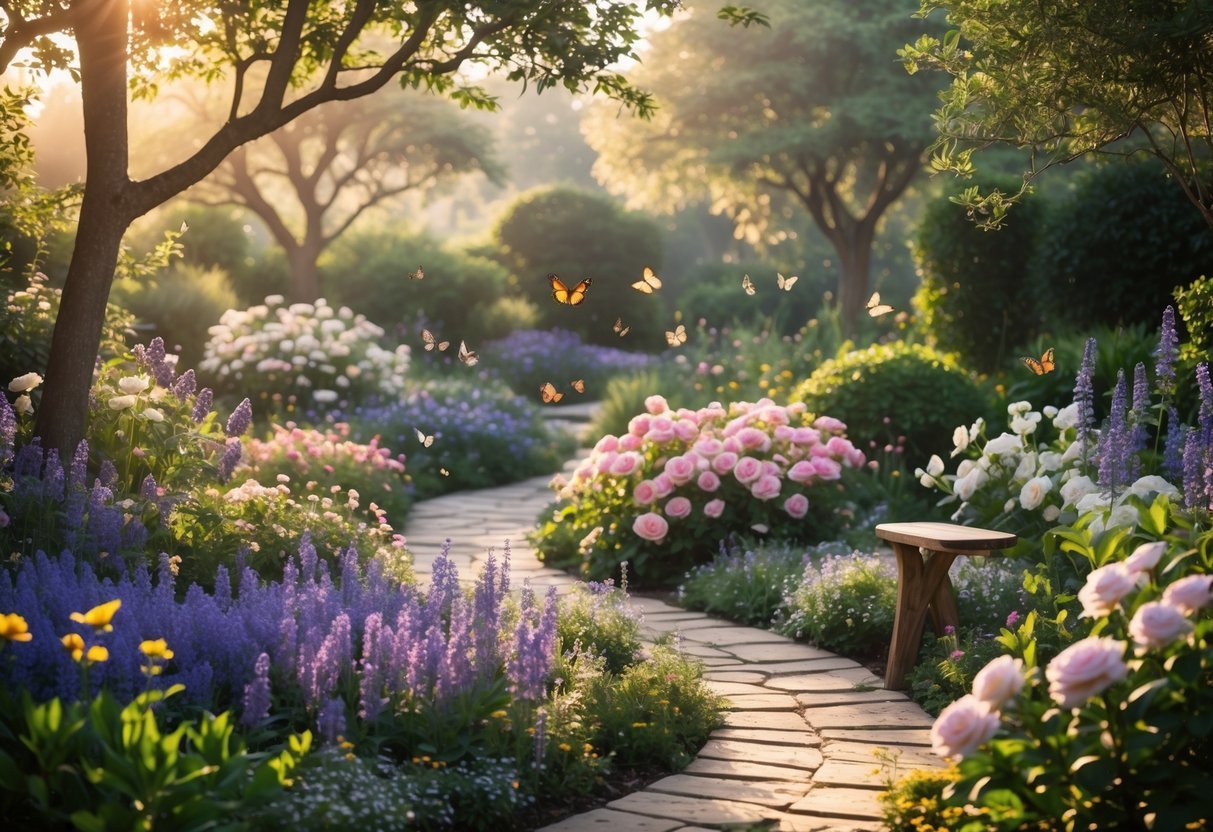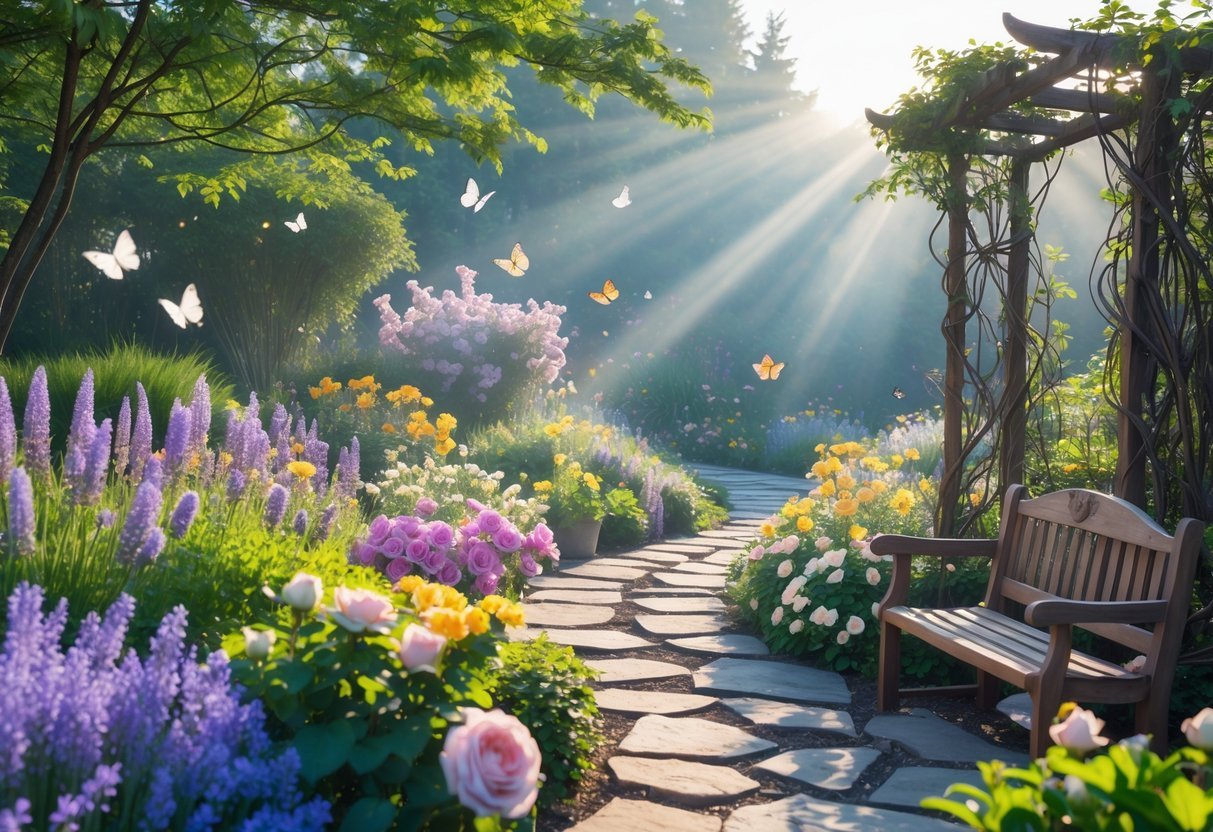Creating a magical fragrance garden is all about picking plants that fill the air with gorgeous scents and make your outdoor space feel special. Aromatic flowers like lavender, jasmine, and roses bring layers of fragrance that shift with the seasons—turning any patch of earth into a little retreat. If you ask me, the real trick is mixing scent-rich plants in a way that keeps the aroma going, always inviting you back out.

Think about wind direction and where you hang out most—direct those fragrant breezes toward your favorite seat or the kitchen window. And hey, some cozy lighting along the paths? That doesn’t just show off your plants, it lets you enjoy the garden’s magic after sunset. With a bit of planning, a fragrance garden becomes a haven for the senses and a real mood booster.
Essential Elements of a Magical Fragrance Garden

A garden rich in scent needs more than just a few pretty flowers. You’ve gotta think about which plants actually bring the fragrance, how those scents mingle in the air, and how the whole space feels when you’re in it. It’s funny how a certain smell can instantly bring back a memory or shift your mood, isn’t it?
Defining a Fragrant Garden
A fragrant garden is a space designed with scent in mind—plants chosen mainly for how they smell, not just how they look. You’ll find a mix of fragrant flowers and leafy plants that release their scent at different times, keeping things interesting all season.
Where you put your plants matters. Place them near spots where you hang out, and pay attention to how strong (or subtle) each scent is. Jasmine, lavender, lilac, sweet alyssum—these are classics for a reason. And don’t drown your plants; too much water can wash out those essential oils that make them smell so good. Sometimes, arranging your plants in spirals or groups helps the fragrance drift just right.
Key Benefits of Scented Spaces
Fragrant gardens aren’t just about smelling nice—they can really lift your spirits. Sometimes a whiff of lilac or rose can send you right back to childhood summers or a special place.
Scents like lavender and jasmine are famous for helping folks relax (and science backs that up). Spending more time outside, surrounded by soothing smells, does wonders for your mood. Plus, when you have people over, a fragrant garden sets the perfect scene—no need for fake air fresheners.
Understanding Sensory Experience
A fragrant garden isn’t just for your nose. The best ones pull you in with color, texture, and the way the plants are arranged. It’s about layering—tall, showy lilacs as anchors, with low, sweet alyssum filling in the gaps.
Scent is powerful, and it can take you places emotionally. Arrange your seating where the fragrance pools, or where you can catch a breeze. A little thoughtful lighting helps too, making those scented corners even more inviting.
Choosing and Combining Fragrant Plants
Picking the right mix of plants is half the fun. You want a blend of flowers, shrubs, and herbs—some that bloom early, some late, and all with scents that play nicely together. Don’t forget to mix annuals and perennials for a long-lasting show.
Selecting Fragrant Flowers and Shrubs
You can’t beat roses for fragrance, and there are so many varieties bred for scent. Lilacs and gardenias pack a punch too, and they look great as garden centerpieces. Jasmine and honeysuckle? Perfect for climbing up a trellis or fence, and they really come alive in the evening.
Try moonflowers for a nighttime scent surprise. Hyacinths and lilies bring fresh, floral notes in spring and summer, while sweet peas and freesias add a delicate touch. If you stagger your plant choices, your garden will smell amazing from spring till frost.
Incorporating Aromatic Herbs and Fresh Herbs
Herbs aren’t just for the kitchen—they’re scent powerhouses. Rosemary and thyme love the sun and bring a piney, herbal kick. Mint and lemon balm? Crush a leaf as you walk by and you’ll see why I always plant them near the path.
Sage and lemon verbena add a warm, citrusy vibe. Bonus: many of these herbs keep pests away and attract pollinators. Tuck them near seating areas or walkways so their aroma can surprise you (and your guests).
Blending Annuals and Perennials
Mixing annuals and perennials gives your garden both stability and a bit of adventure. Perennials like lilacs and roses keep coming back, while annuals—think nicotiana and dianthus—fill in the gaps and offer bursts of scent.
This combo keeps the garden lively and lets you play with new colors or shapes each year. Snip some annuals for bouquets, and you’ll encourage more blooms outside. Don’t be afraid to mix heights and textures—nature isn’t fussy, and your garden shouldn’t be either.
Designing Your Magical Fragrance Garden

Designing a fragrant garden isn’t just about what you plant, but where you put it. Pay attention to the wind, how the scents move, and where you want to be when the garden’s at its best.
Strategic Garden Layouts for Scent
Layout can make or break the scent experience. Cluster the heavy hitters—lavender, rosemary, and natives—near patios, windows, or wherever you like to sit with your morning coffee.
Line the paths with herbs and flowers like thyme or morning glories, so every stroll is a treat. Vary the plant heights to keep things balanced—tall blooms in the back, shorter ones up front where you can really catch their scent.
If you want to get fancy, create scent “zones”—herbs here, florals there—so you get a new experience as you wander. And always think about how the wind will carry those lovely smells toward your favorite hangouts.
Optimizing Plant Placement and Garden Borders
Borders are prime real estate for fragrant plants. Use native species when you can—they’re often more fragrant and support local wildlife.
Tall, scented shrubs or climbers like morning glories work wonders at the edges, helping the scent drift across the garden. Mix in some perennials and bulbs for layers of bloom and aroma.
Planting near walkways means you’ll get a hit of scent every time you pass. In tight spaces or patios, borders become both your visual and aromatic highlight.
Incorporating Night-Blooming and Seasonal Fragrance
Want your garden to come alive after dark? Go for night-bloomers like night-blooming jasmine or night-scented stock. Their fragrance really kicks in at dusk, creating a chill, dreamy vibe.
Keep the scent going year-round by mixing up your planting schedule. Spring bulbs like daffodils and lily of the valley start things off, then summer and fall bring on the jasmine, roses, and native shrubs.
If you stagger your bloom times, you’ll avoid those awkward scent lulls. It’s a bit of a puzzle, but totally worth it.
Adding Water Features for Enhanced Aroma
A little water goes a long way in a fragrance garden. Fountains or small ponds add calm and help scents carry farther, especially on warm evenings.
Place your water feature near clusters of fragrant plants and you’ll draw folks in. The sound of water mixed with the scent of lavender or rosemary is pure relaxation.
Natural materials for your fountain or pond keep things feeling grounded and blend right in with the rest of your garden’s sensory treats.
Beyond Scents: Enhancing Well-being and Enjoyment
A fragrance garden isn’t just about pretty smells—it can seriously lift your mood, spark creativity indoors, and even help the local ecosystem. The right mix of plants and features makes your garden a place you’ll want to be, rain or shine.
Aromatherapy and Essential Oils
Plants like lavender, rosemary, and pine are loaded with essential oils that can shift your mood or help you unwind. You can extract these oils for diffusers, or just enjoy them straight from the garden.
Breathing in lavender has been shown to ease anxiety. Pine is another favorite—refreshing, grounding, and even said to help you focus. Planting these in your garden means you’ve got a natural wellness toolkit right outside your door.
Cut Flowers and Indoor Arrangements
Don’t forget to bring some of that fragrance inside. Snip a few sprigs of lavender, gardenia, or rose, and your whole house will smell amazing.
To keep cut flowers fresh, use sharp scissors, change the water often, and keep arrangements out of direct sun. A vase of fragrant blooms on the table can be a real mood-lifter, and sometimes it’s those little things that make all the difference. If you love arranging flowers, set aside a “cutting patch” in your garden for easy access.
Wildlife Attraction and Ecological Benefits
Fragrant plants do more than just smell good—they play a big role in the garden’s ecosystem. Bees, butterflies, and hummingbirds can’t seem to resist certain scents and nectar, so they’ll often hang around, which is great for biodiversity.
Lavender, lemon verbena, and their aromatic friends put out the welcome mat for wildlife, offering up food and a bit of shelter. There’s something kind of special about watching nature do its thing right in your own backyard.
Plus, some of these scented plants are like natural bodyguards, keeping pests at bay without a bunch of chemical sprays. It’s a nice way to keep things healthy for both the plants and the people wandering through—who doesn’t want a garden that looks good and does some good, too?




